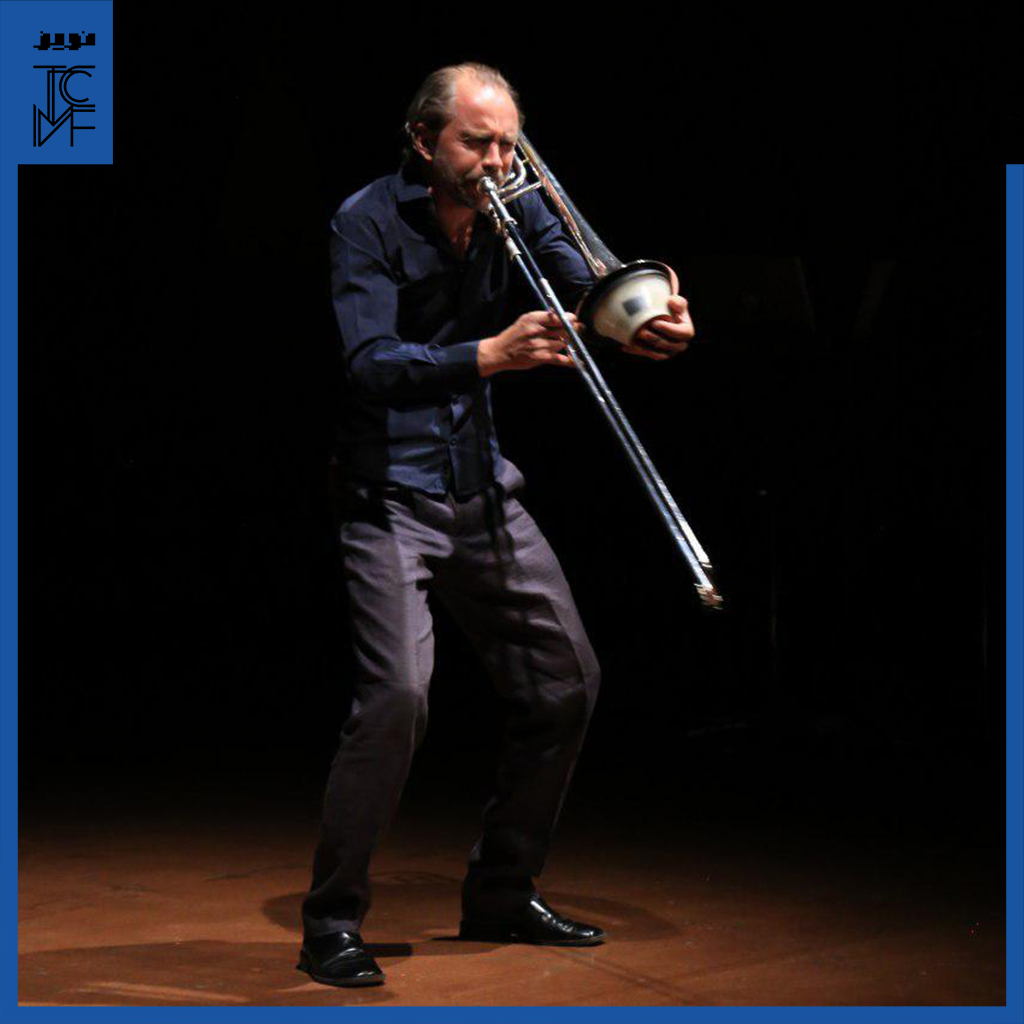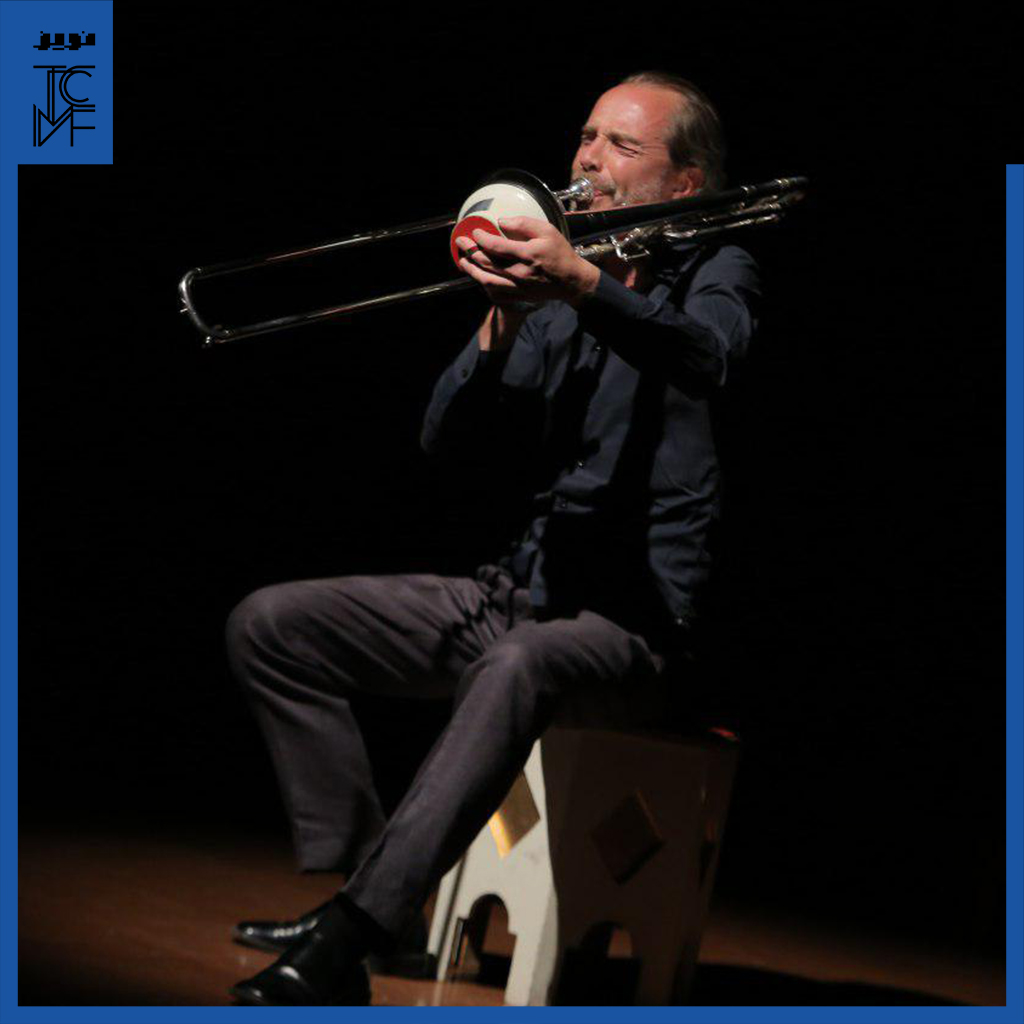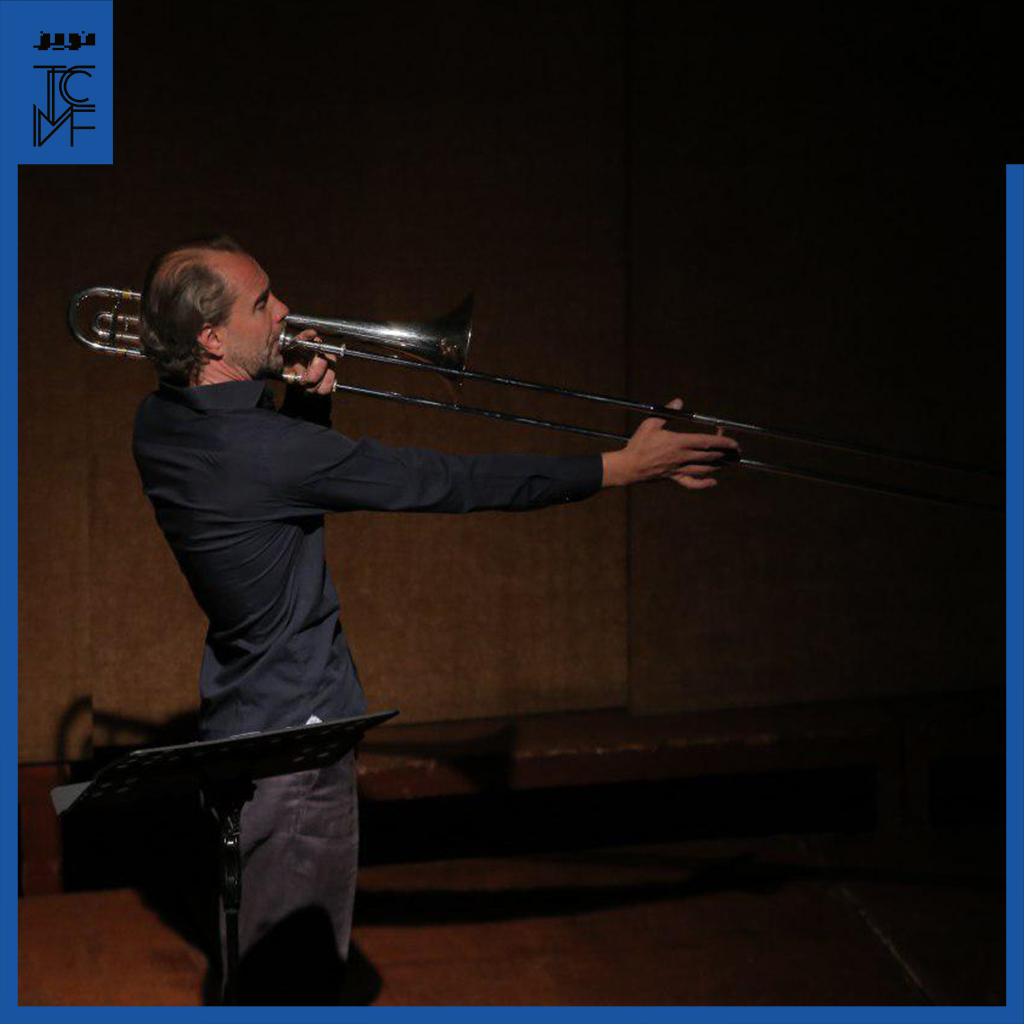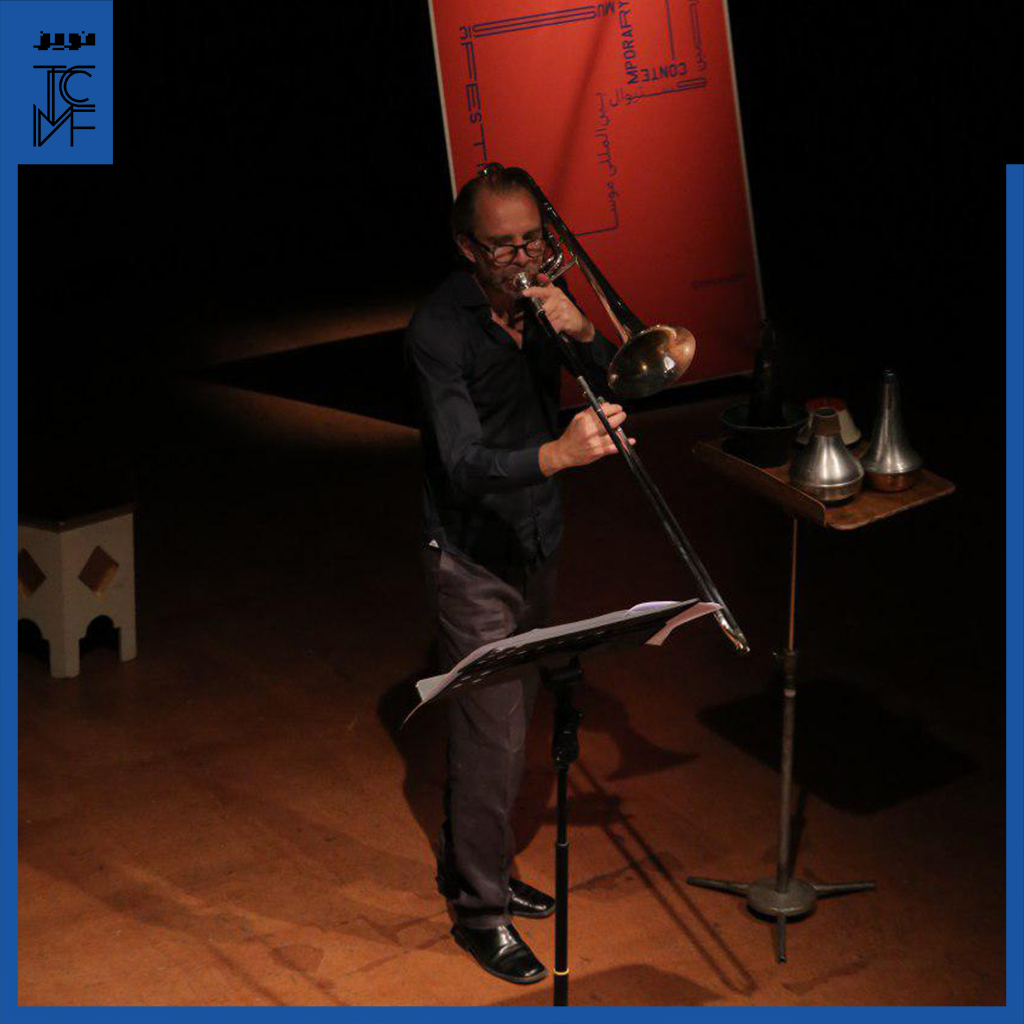یک نوازنده به تنهایی با «ترومبون»اش روی صحنه، همین؟ بیشک متقاعد کردن شنونده به اینکه بنشیند و یک ساعت گوش بدهد آسان نیست. به باورِ نگارنده اما «ایوو نیلسون»ِ سوئدی از عهدهی این کار نهچندان آسان بهخوبی برآمد. در همان نخستین لحظهی حضورش وقتی برای نواختن قطعهی «سکوئِنزا، شمارهی پنج» اثر «بِریو» رو به شنوندگان -در این مورد باید خواند تماشاچیان- ایستاد، پیدا بود با شیوهی بازی بهخوبی آشناست. تا جایی که صاحب این قلم بهیاد میآورَد در بیشتر موارد مرسوم است که در اجرای این قطعهی «بِریو» نوازنده با لباس و صورتکِ یک دلقک بر صحنه حاضر میشود. «نیلسون» اما چنین نکرده بود. شاید به این دلیل که این شمایل اجرای دیگر قطعاتِ کنسرت را تحت تأثیر میگرفت و حذف آن هم برای قطعاتِ بعدی زمانبر میبود(؟) لیکن درست در لحظهی حضور «نیلسون» بر صحنه بیهیچ آرایشِ بیرونی، دلقک رؤیت شد و مخاطبان را متقاعد کرد که نهفقط با یک نوازندهی زبده که همچنین با یک پرفورمَنسآرتیستِ توانا روبهرو هستند. در دیگر قطعاتِ این کنسرت هم حضورِ پُررنگِ رفتار از سوی هنرمند بُعدی به آثار اضافه کرده بود که همهی آنها را از موسیقیِ محض بودن قدمی، قدمهایی فراتر میبُرد.
در انتخابِ قطعاتْ سلیقه، هوش و دانش دستبهدست هم داده بود. دو قطعهی آغازین یکی از «بِریو» و دیگری از «شِلسی» با استادیِ تمام اجرا شدند. گمان میکنم که اگر در نزد دوستانِ «رادیکال» موسیقیِ معاصرِ ایران، نام این دو آهنگساز را بگوییم بیدرنگ خواهند گفت: اینها «کلاسیک» هستند و موسیقیِ معاصر محسوب نمیشوند! لیکن «نیلسون» با دانشی ستودنی قطعاتی از این دو آهنگساز را در کنارِ آثاری از خود و یک آهنگساز هموطناش و همچنین قطعهای از آیدین صمیمیمفخّم چنان چیده بود که تو به خوبی میتوانستی سِیرِ تکوینیِ آنچه را که «موسیقیِ معاصر» میخوانیم، ببینی و حظ بَری.
«سونوریته»ی دقیق و فکر شده، اِشرافِ کامل بر موضوعِ «میزانسِن» (یعنی جایگیریِ هنرمند در نقاطِ متفاوتِ صحنه) و ارتباط آن با اجرای هریک از قطعات، همراه با تفسیرهای شخصیِ بسیار درخشان از آثار، کنسرتِ «نیلسون» را به کلاس درسی بدل کرده بود که شاگردانِ غایب کم نداشت.
Esteem of the artist’s presence
On Ivo Nilsson’s performance in Tehran Contemporary Music Festival
by Mani Jafarzadeh
One man and his Trombone on the stage? That’s it? Surely persuading an audience to sit down and listen for an hour is not an easy feat. But the writer believes that the Swedish Ivo Nilsson raised well to this not so easy task. From his first moment on the stage when he stood facing the listeners -though in this case the watching audience is more appropriate- to perform Sequenza by Luciano Berio, it was clear that he knows his game. As far as I remember, in most cases it is common for the performer of Berio’s piece to appear on the stage with a clown’s clothing and makeups. But Nilsson didn’t do this. Maybe because such an appearance would affect the rest of the performance and changing the cloths and makeup would take some time. But right from his first moment on the stage, without any external makeup, the clown was visible and he persuaded the audience that they are at the presence of not only a skillful trombone player, but a competent performance artist. In other pieces of this concert too, the spectacular presence of the artist’s manner and act added such an extra dimension to the works that -to some extent- moved them away from being absolute music.
In choosing the repertoire taste, intelligence and knowledge had worked well hand in hand. The two first pieces by Berio and Scelsi were performed with total mastery. In my estimation, if you name these two composers in front of our more “Radical” contemporary music enthusiast friends, without any hesitation they would declare them “classic” and not contemporary music! But Nilsson, with an admirable command, had placed these pieces next to some of his own works and one other fellow Swedish composer and also a piece by Idin Samimi Mofakham that in a way that you could clearly see and appreciate the evolution of what we call contemporary music.
The clear and thought-out sonority, complete awareness of Mise-en-scène in relation to each piece, together with extremely brilliant personal interpretations of the works made Nilsson’s concert a master-class though with not so little students missing.
This review is written for The Fourth Tehran Contemporary Music Festival. All rights reserved for www.noise.reviews





